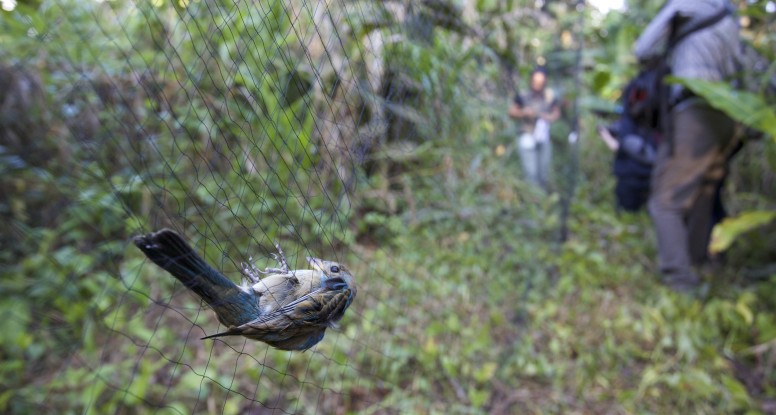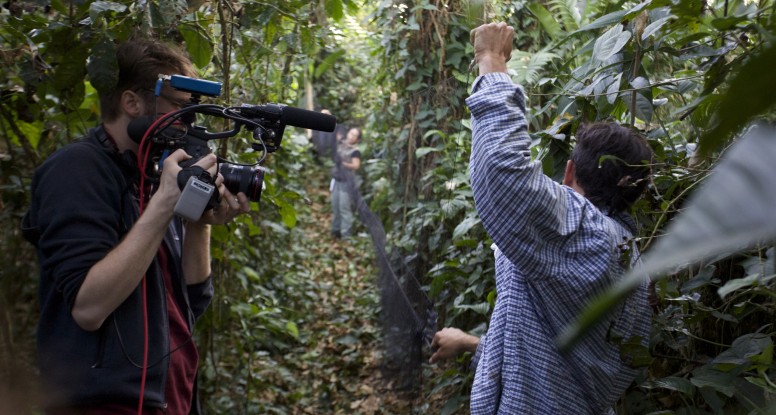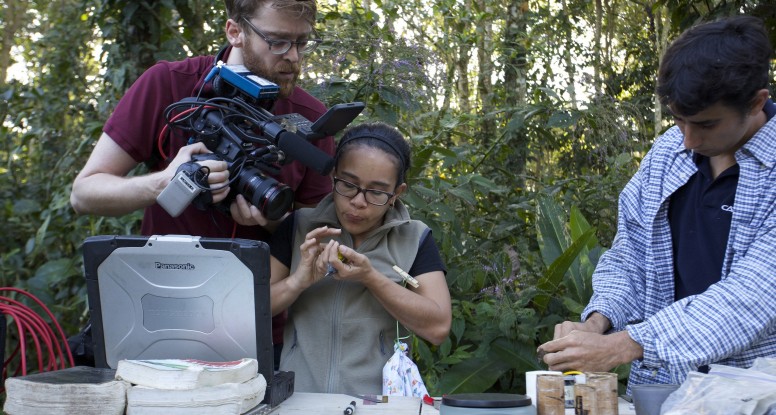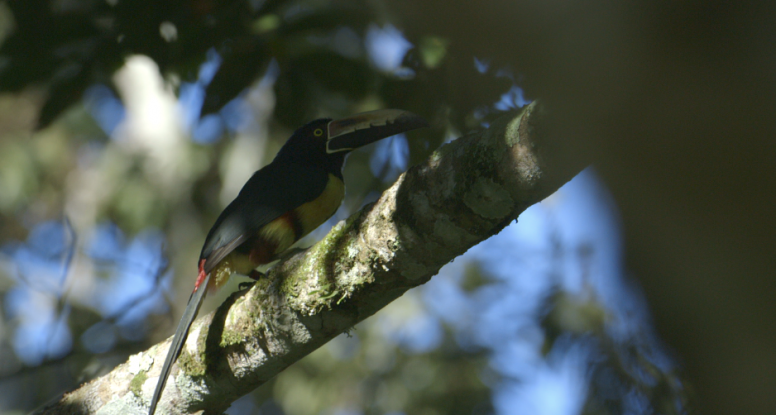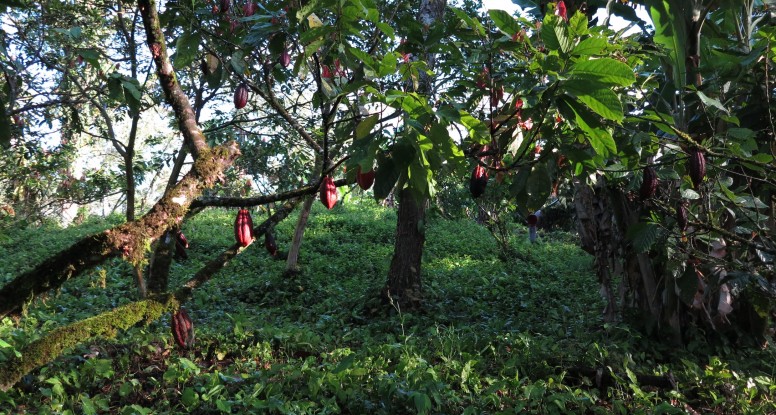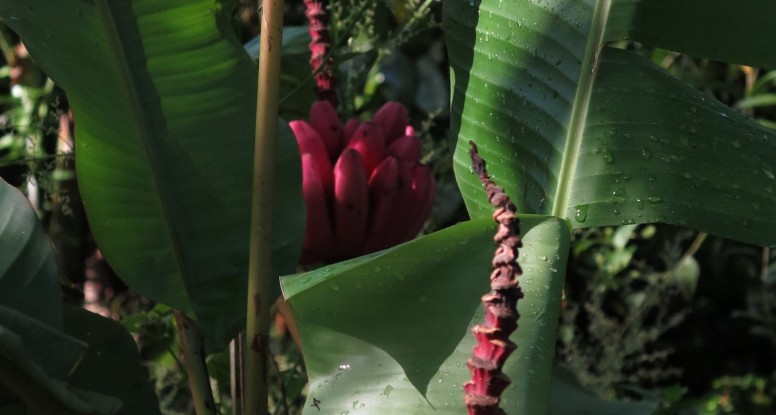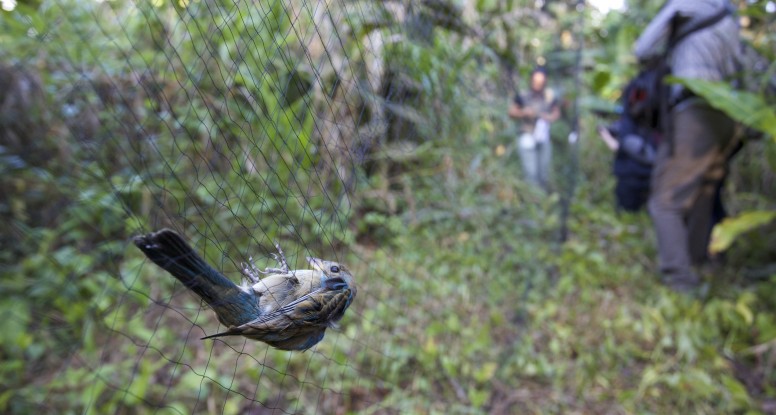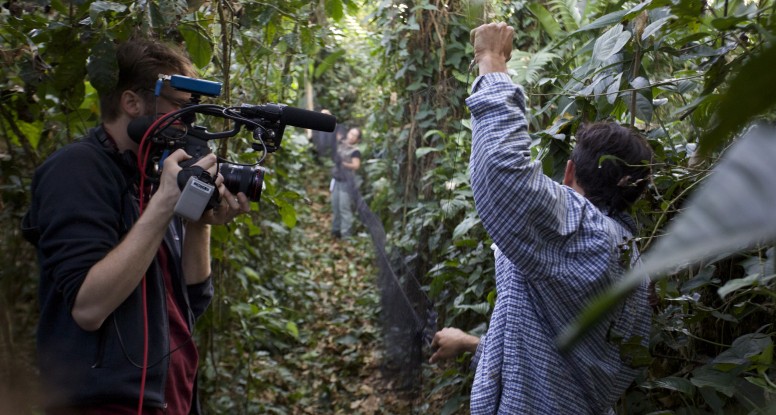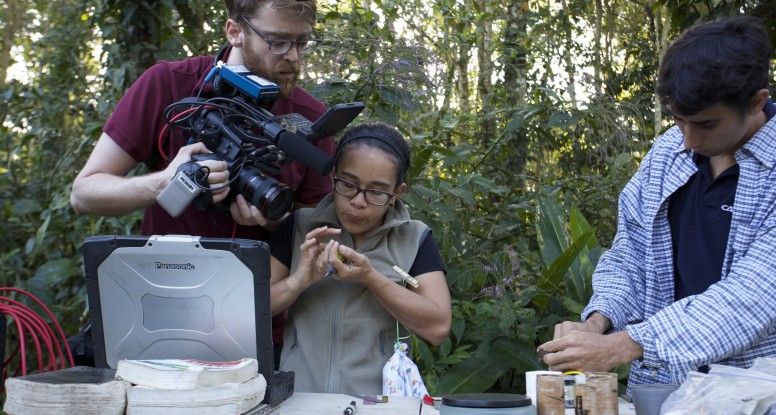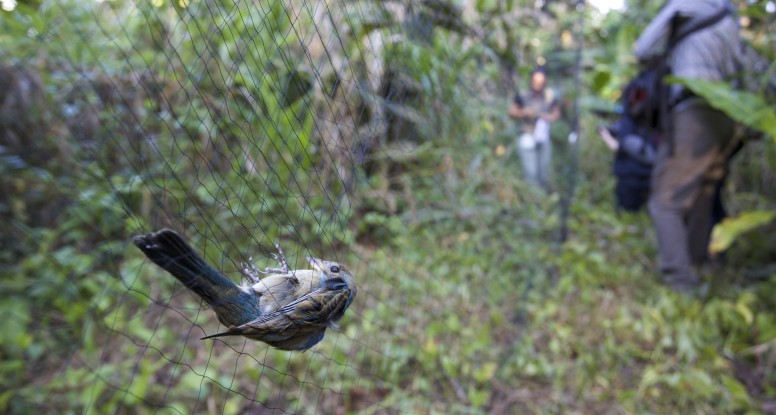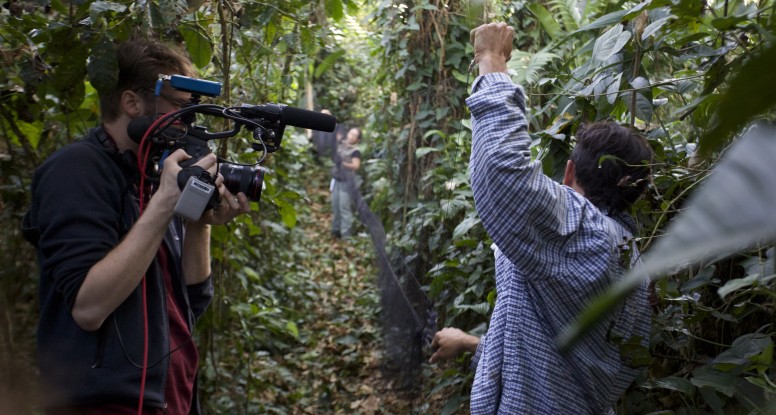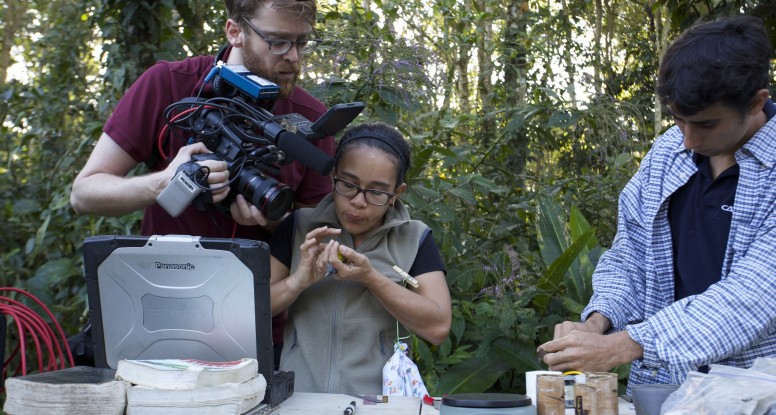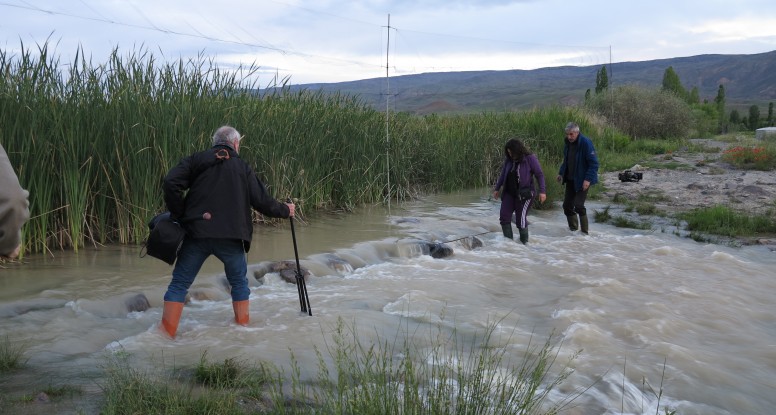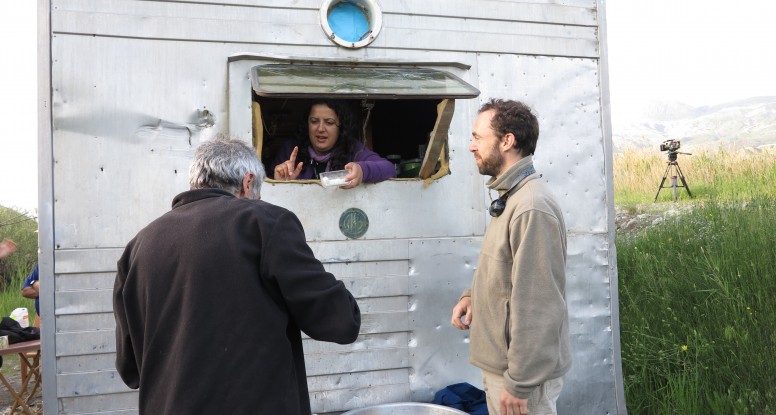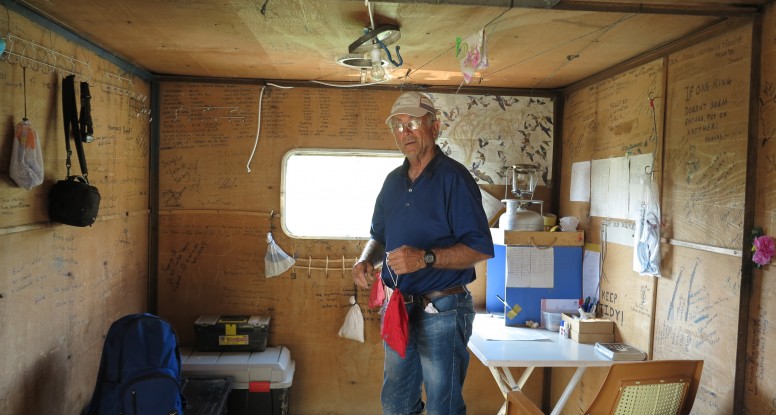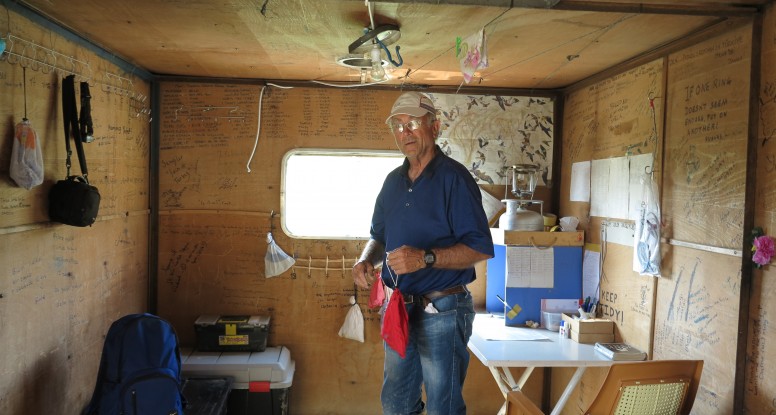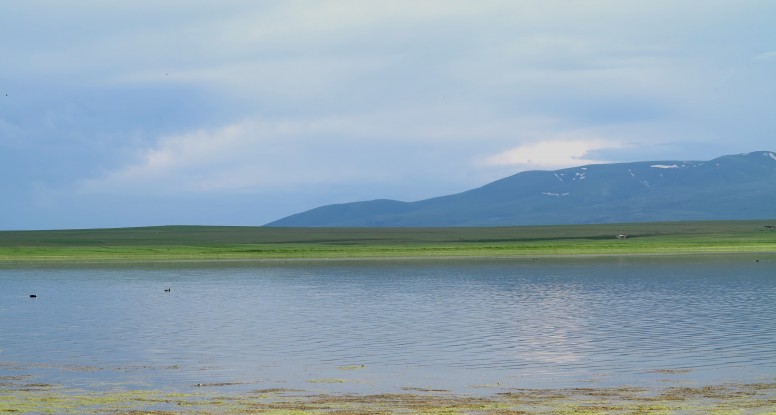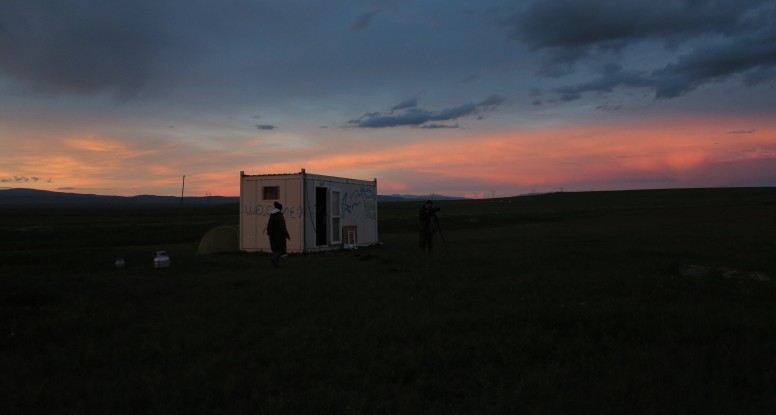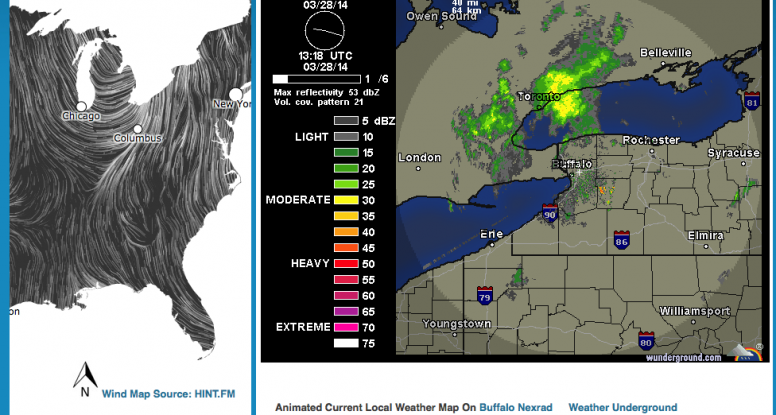Shoot Day: February 22, 2014 I had never been to Costa Rica, so filming there was amazing experience. After driving for hours on the single traffic-choked road that winds from San Jose we finally arrived at CATIE. CATIE is a Tropical Agricultural Research and Higher Education Centre, located near Turrialba in Costa Rica. Here Alejandra Martinez-Salinas works both on research with the number one coffee pest – the Coffee Beetle Borer as well as manages the The Proyecto Monitoreo de Aves (PMA) .
Alejandra: “When I started working with songbirds I fell in love with the migrants because they were so tiny and fragile but also so strong and determined — I mean they really want to get somewhere and they usually get there! They move through so many different countries, it’s special just to hold an animal that’s been travelling so much, that’s been to so many different places …”
On our first morning of shooting we followed Alejandra and her associate Almilkar through their early morning songbird monitoring routine. At CATIE they monitor songbirds in different agricultural uses like abandoned coffee and cacao plantations. When we were filming they banded a few neo tropical migrants including a juvenile indigo bunting and a mourning warbler. The mourning warbler was a repeat band – it had already made the journey to North America and back and was re-captured one year later, near the exact same spot as the previous year. Even though I knew about this, to experience it was truly remarkable.

